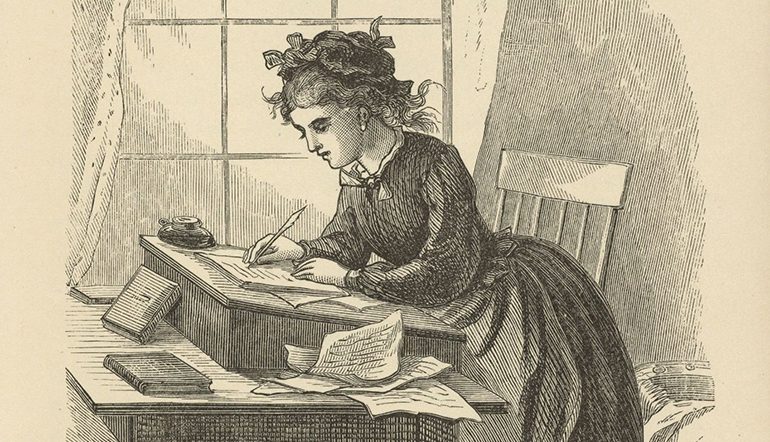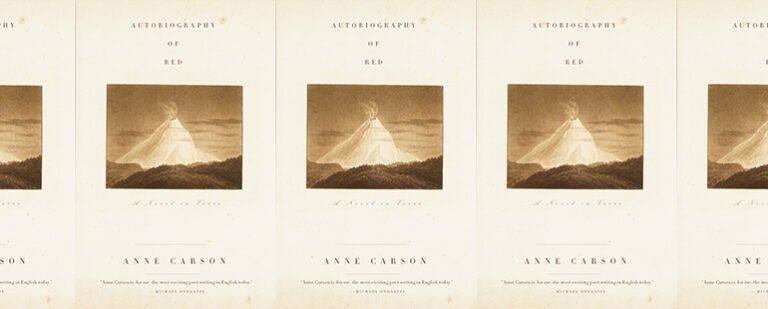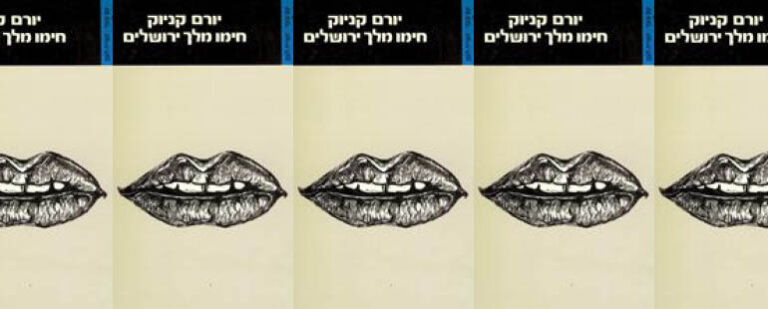The Conflicted Feminism of Little Women

Little Women is, in many ways, an unlikely candidate for a perennial feminist classic. Louisa May Alcott’s 1868 novel, now in its 150th year and undergoing its umpteenth adaptation in a new PBS Masterpiece show, is a sentimental, didactic piece of literature that mostly celebrates traditional gender roles and places a rosy, wistful haze over its portrayal of domestic life. Alcott’s well-rounded portrayal, however, of imperfect women—particularly ambitious, independent tomboy Jo—as well as her notable resistance to the conventional “marriage plot” of her time, have afforded the novel a long-lasting, if conflicted, relationship to feminist thought.
If Little Women has a rebellious, feminist spirit, it’s contained in the character of Jo March. Jo is a funny, clever tomboy with a wild, strong-willed personality, an “unladylike” temper, and a burning ambition to be a writer. At the beginning of Little Women, Jo is described as having a “gentlemanly” manner, which includes using slang words and whistling with her hands in her pockets like a boy. She tells her sisters, in no uncertain terms, that she has no desire to “stay home and knit, like a poky old woman!” but would rather fight in the Civil War with their father. Like Alcott herself, who closely identified with her protagonist, Jo openly laments being born a girl, with all of the limits and restrictions that entails. “It’s bad enough to be a girl, anyway, when I like boys’ games and work and manners!” she says. “I can’t get over my disappointment in not being a boy.”
Alcott’s depiction of Jo is complex, subversive for her time, and, perhaps most importantly, palpably human. At one point in the novel, Jo cuts off all her hair, both to sell and because “It will do my brains good to have that mop taken off.” When Meg finds her crying in the night, Jo admits that a “vain part of [her]” misses her long hair—a feeling which dissipates by the next morning. And for all that romanticizing of domesticity in the novel, Jo openly disdains the notion of getting married and having children. Instead, she dreams of a very different kind of homestead:
I’d have a stable full of Arabian steeds, rooms piled high with books, and I’d write out of a magic inkstand… I want to do something splendid before I go into my castle, something heroic or wonderful that won’t be forgotten after I’m dead…. I think I shall write books, and get rich and famous, that would suit me, so that is my favorite dream.
This ambition and rejection of conventional domesticity made Jo a revolutionary character for the times, and Alcott has said that she wanted to write a novel that gave women more options than marriage and children. By the end of Part One (which was a standalone novel at the time of its release, later combined with its sequel), Meg is engaged, but all of the girls are still unmarried. Alcott did this intentionally, in order to demonstrate that the girls have their whole lives ahead of them and to reinforce that the novel, and especially Jo, wouldn’t conform to the conventional “marriage plot.” “Girls write to ask who the little women marry, as if that was the only aim and end of a woman’s life,” Alcott wrote in her journal. “I won’t marry Jo to Laurie to please anyone.”
After experiencing a great deal of pressure from her readers and publisher, however, Alcott wrote a sequel, now the second volume of the novel, which shows all of the girls meeting more conventional, domestic fates. Meg marries and quickly gets pregnant, Amy marries boy-next-door Laurie, and Jo marries the much-older Professor Bhaer and eventually gives birth to two boys. The only sister who doesn’t marry is Beth, who passes away at a young age. In many ways, the second volume directly contradicts Alcott’s desire to avoid the “marriage plot,” and, in fact, romanticizes domesticity as curative of the young women’s character flaws. When Amy marries, she loses her pretentious affectation, her voice becomes tender, her face “full of the soft brightness which betokens a peaceful heart,” and her demeanor changes from overly prim to “womanly and winning.” When Meg gets pregnant, the narrator describes the experience as “the deepest and tenderest of a woman’s life,” and Meg herself tells Jo that marriage is “just what you need to bring out the tender womanly half of your nature.” Jo, for her part, renounces her previously wild temperament, and after she’s married, she says she is “far happier than [she] deserve[s]” and that she “never was so jolly in [her] life.”
That being said, Alcott still maintained a rebellious streak in this second volume, mostly by refusing to marry Jo and Laurie. Laurie is, in many ways, portrayed as a typical hotheaded romantic hero. And for much of the novel, it seems inevitable that Jo and Laurie proclaim their love for each other and marry. But instead, when Laurie proposes, Jo explicitly rejects all conventional romantic ideals for the sake of preserving her independence and her own identity. She says she has no desire to marry, because she “love[s] [her] liberty too well to be in a hurry to give it up for any mortal man.” And although she loves Laurie, she isn’t willing to give up her ambition to be a “proper wife” for him:
You’ll get over this after a while, and find some lovely accomplished girl, who will adore you, and make a fine mistress for your fine house. I shouldn’t. I’m homely and awkward and odd and old, and you’d be ashamed of me, and we should quarrel—we can’t help it even now, you see—and I shouldn’t like elegant society and you would, and you’d hate my scribbling, and I couldn’t get on without it, and we should be unhappy, and wish we hadn’t done it, and everything would be horrid!
And in the end, Jo is exactly right. While Laurie licks his wounds, he tries to write an opera with Jo as a heroine but then can only remember her “oddities” and perceived faults as a romantic interest. Jo “wouldn’t be put into the opera at any price,” he thinks to himself, and instead writes a “less intractable damsel to immortalize in melody”: an angelic, ladylike girl with golden hair. He then courts and marries Jo’s sister Amy, a beautiful, blonde-haired girl with a talent for art but little ambition. While Jo is too independent for a typical romantic ending, Amy is ready and willing to play the part of traditional housewife and, so, is ultimately a better match for Laurie.
By all accounts, Alcott didn’t want to marry Jo off at all. But, since her hand was forced, she did so in the most unconventional way possible. Bhaer’s proposal to Jo, which critic G. K. Chesterton called “one of the really human things in human literature,” subverts romantic tropes to the point of outright rejection. Bhaer himself is not a typical romantic interest for a 19th-century novel: he is approximately fifteen years Jo’s senior, he has an exaggerated German accent and terrible table manners, and his personality more closely resembles “kindly professor” than any kind of Byronic hero. When he proposes during a rainstorm, he can’t get down on his knees, because the ground is too muddy, and he can’t offer her his physical hand, since his hands are full. Jo looks “far from lovely” at that moment, since she’s covered in mud and her clothes are ruined by the rain. And yet,
Mr. Bhaer considered her the most beautiful woman living, and she found him more ‘Jove-like’ than ever, though his hatbrim was quite limp with the little rills trickling thence upon his shoulders… and every finger of his gloves needed mending.
Jo’s change of heart about marriage and children is often cited by feminists as a distinctly anti-feminist choice, but her marriage to Bhaer is decidedly untraditional. By rejecting Laurie, her childhood best friend (and, arguably, her first love) who wanted to lead a traditional lifestyle, and choosing Bhaer, an open-minded professor with whom she has a profound intellectual connection, Jo carves out space to lead a somewhat unconventional life within the boundaries of domesticity. She does marry and have children, but she plans to continue her writing career and open a boarding school for boys, which was very unusual for women at that time.
More troubling than Jo’s decision to marry, however, is her overall character arc, which sees her transform from a “wild,” spirited girl into a gentler, more “womanly” version of herself. Over the first half of the novel, each of the girls—except for the timid, self-abnegating Beth, who is held up as the ultimate feminine ideal—has to overcome a specific,and very gendered, character flaw: Meg is materialistic and has to learn to reject luxury, Amy is vain and is told to become more “modest,” and Jo has a hot temper and is encouraged to tame her wild nature. The entire first half of the novel essentially consists of the girls’ mother, “Marmee,” policing their gender, teaching them to reject the “evils” of femininity (or, in Jo’s case, un-femininity) and retain only the most feminine virtues, such as softness, selflessness, and modesty.
At first, this gender policing doesn’t seem to work on Jo, since she has no desire to appear more feminine. But then, when Beth becomes ill, Jo takes it upon herself to care for her, which, in turn, makes her more selfless and—as her father puts it—“motherly.” When Beth is dying, Jo undergoes a fundamental shift and “see[s] the beauty and the sweetness of Beth’s nature… and acknowledge[s] the worth of Beth’s unselfish ambition to live for others.” The narrator goes so far as to tell us that Beth’s “submissive spirit” essentially transfers to Jo upon her untimely death:
Jo laid her wearied head down on Beth’s little brown hood, which no one had thought of moving from the table where she left it. It must have possessed some magic, for the submissive spirit of its gentle owner seemed to enter into Jo.
On its face, it’s not necessarily anti-feminist that Jo learned to be more selfless, especially considering that Little Women is a didactic novel intended to teach virtue. However, it is certainly anti-feminist that this change in her character also dampens her adventurous spirit. She goes from writing adventure-themed stories to more realistic, moralistic fiction,very similar to the style of Little Women itself. She tells Amy that she wants to be a “reformer” but then opens a boys’ school rather than getting involved in politics—or trying to educate young girls like herself, for that matter. And, most disturbingly, Jo’s “selfishness” is directly tied to her independence and ambition; near the end of the novel, Amy gently teases Jo that Jo’s “castle” didn’t turn out like she thought it would when they were girls, and Jo replies,
Yes, I remember, but the life I wanted then seems selfish, lonely, and cold to me now. I haven’t given up the hope that I may write a good book yet, but I can wait, and I’m sure it will be all the better for such experiences and illustrations as these.
This one passage illustrates the anti-revolutionary, somewhat contradictory nature of Little Women’s feminist leanings. Jo is ambitious compared to other housewives of her time period, but her overall character arc still amounts to a breaking of spirit. It’s the earliest iteration of the trite, gendered, and essentially meaningless mantra of “having it all.” She wants to be a writer and do great things, but only within the limitations of various institutions: selfless femininity, marriage, and family. Like Jo herself, the novel is not radical but rebellious, intending not to change the world as we know it but to carve out a space for strong, independent women within the already-established patriarchal structures.


